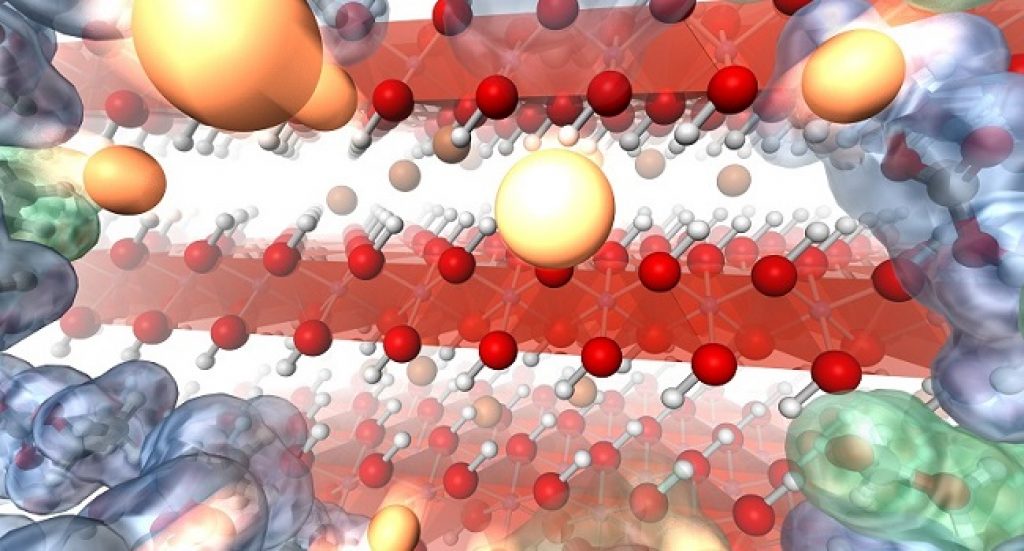
AsianScientist (Apr. 16, 2015) – Two independent groups of researchers have proposed sodium and aluminum as replacements for the ubiquitous lithium-ion batteries. Their papers have been published in Nature Communications and Nature respectively.
Since their launch by Sony Corporation in 1991, lithium-ion batteries have come to dominate the consumer electronic market. With the rise of electric vehicles and renewable energy grids, there has been steadily increasing demand for lithium-ion batteries. However, lithium is a rare earth metal that is in short supply and lithium-ion batteries have a number of disadvantages such as high flammability.
With its high power density and the abundance of cheaply available raw materials, sodium-ion batteries have attracted intense attention as a potential replacement for lithium. Unfortunately, sodium-ion batteries suffer from poor cycle stability and face a trade off between energy and power densities.
In the first paper, a team of researchers led by Professor Yamada Atsuo and Associate Professor Okubo Masashi, in collaboration with Professor Moriguchi Isamu at the Nagasaki Graduate School of engineering used nanotechnology to create electrodes that support the intercalation (absorbing and releasing) of sodium ions.
They showed that a nanosheet of titanium and carbon (Ti2C) could store charges with a higher capacity and speed than existing electrodes. Using the nanosheet compound as a negative electrode in combination with an existing positive electrode, the researchers were able to build a prototype which exhibited a high charge/discharge rate, high capacity and long cycle life.
A second group of researchers led by Professor Dai Hongjie at Stanford University took an alternative route, developing a high-performance, fast-charging battery based on aluminum. Assisted by colleagues from the National Taiwan Normal University and National Taiwan University of Science and Technology, Dai and his team have published their results in Nature.
Aluminum has long been an attractive material for batteries, mainly because of its low cost, low flammability and high-charge storage capacity. For decades, researchers have tried unsuccessfully to develop a commercially viable aluminum-ion battery. A key challenge has been finding materials capable of producing sufficient voltage after repeated cycles of charging and discharging.
An aluminum-ion battery consists of two electrodes: a negatively charged anode made of aluminum and a positively charged cathode.
“People have tried different kinds of materials for the cathode,” Dai said. “We accidentally discovered that a simple solution is to use graphite, which is basically carbon. In our study, we identified a few types of graphite material that give us very good performance.”
For the experimental battery, the Stanford team placed the aluminum anode and graphite cathode, along with an ionic liquid electrolyte, inside a flexible polymer-coated pouch.
“In our study, we have videos showing that you can drill through the aluminum battery pouch, and it will continue working for a while longer without catching fire,” Dai said. “But lithium batteries can go off in an unpredictable manner–in the air, the car or in your pocket. Besides safety, we have achieved major breakthroughs in aluminum battery performance.”
The aluminum prototype battery can charge in one minute and withstand more than 7,500 cycles without any loss of capacity. By comparison, a typical lithium-ion battery lasts about 1,000 cycles.
In addition to small electronic devices, aluminum batteries could be used to store renewable energy on the electrical grid, Dai said.
“The grid needs a battery with a long cycle life that can rapidly store and release energy,” he explained. “Our latest unpublished data suggest that an aluminum battery can be recharged tens of thousands of times. It’s hard to imagine building a huge lithium-ion battery for grid storage.”
But more improvements will be needed to match the voltage of lithium-ion batteries, Dai added.
“Our battery produces about half the voltage of a typical lithium battery,” he said. “But improving the cathode material could eventually increase the voltage and energy density. Otherwise, our battery has everything else you’d dream that a battery should have: inexpensive electrodes, good safety, high-speed charging, flexibility and long cycle life. I see this as a new battery in its early days. It’s quite exciting.”
The articles can be found at:
Wang et al. (2015) Pseudocapacitance Of MXene Nanosheets For High-power Sodium-ion Hybrid Capacitors.
Lin et al. (2015) An Ultrafast Rechargeable Aluminium-ion Battery.
———
Source: The University of Tokyo and Stanford University.
Disclaimer: This article does not necessarily reflect the views of AsianScientist or its staff












